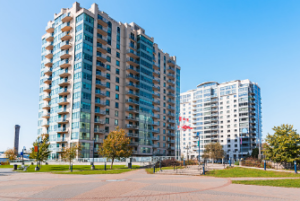Retirement and lifestyle villages share many similarities; both offer housing to individuals over 55. But they differ significantly in some key respects.
 KensingtonPark lifestyle village differs from manufactured home parks in that rather than buying your home outright, you rent the land on which it sits.
KensingtonPark lifestyle village differs from manufactured home parks in that rather than buying your home outright, you rent the land on which it sits.
Independent living
Lifestyle villages provide an attractive option for older adults looking to downsize without compromising their quality of life. These communities typically provide home care services and social activities designed to get people out and about more; transportation services also reduce fuel costs and car maintenance expenses.
When considering moving into a retirement village, extensive research should be performed before choosing. Communities vary greatly in size, cost and services- some even offer pools or bowling greens! It’s also wise to ask whether the community provides meal services by top chefs; such meals could cater specifically for low sodium diets or any special dietary restrictions you might need to meet.
Location should also be considered; you’ll want to live near family, friends and amenities such as shopping centres. Furthermore, the community is near medical services and public transit systems.
One significant distinction between retirement villages and 55s independent living is that retirement villages charge an up-front fee when you move in to cover the costs associated with providing various home care services. Lifestyle villages differ in allowing homeowners to rent the land their home sits on – potentially making life cheaper while allowing any increase in value of your land lease contract to accrue to you as an owner of said lease contract.
Socialising
Socialising is critical to making the most out of retirement and reducing loneliness, which is a leading cause of poor health and psychological well-being among older adults. Lifestyle and retirement villages provide many ways for residents to connect with others; activities like art classes, gardening classes and friendships offer ample opportunity for socialising while helping reduce depression risk.
Group activities are one of the easiest ways to meet new friends in a lifestyle village. Many lifestyle villages feature groups dedicated to certain interests, like brewing or tennis – and these activities are managed by residents themselves to foster a sense of community spirit.
Lifestyle villages are subject to laws similar to residential and caravan parks, whereas retirement villages are more closely aligned with strata title property ownership. Amenities at retirement villages tend to resemble those of holiday resorts; many residents choose to live there so they can lead a peaceful, independent life.
Before moving into a KensingtonPark lifestyle village, do your research. Visit various locations and speak to residents and managers – gaining more knowledge will help make an informed decision. Furthermore, seek legal and financial advice before making your commitment.
No maintenance fees
Lifestyle villages don’t charge monthly maintenance fees like other properties; residents pay weekly rent on the land where their homes reside. It covers on-site community management costs, maintenance of streetscapes and common gardens (such as your front garden), running costs of clubhouse facilities, and rent assistance from the Federal Government.
Be mindful that the land belongs to its operator; should you decide to sell, the village may charge a surrender fee to cover costs associated with maintaining community amenities and amenities. This fee typically depends on how long you have lived there but can also be limited to a certain percentage.
Legal aspects of retirement villages and lifestyle villages differ depending on which state they’re situated in, with lifestyle villages typically falling under legislation that mirrors mobile home and caravan park regulations. In contrast, retirement villages tend to abide by leasehold agreements.
No stamp duty
Alternatively, KensingtonPark lifestyle village provides an option if your traditional family home has become burdensome or you no longer have enough time to care for it. These communities are designed for older adults and offer independence with lower living costs than a house would provide. You can design and build your home from scratch or purchase prefabricated units ready for immediate move-in. Many villages also host social activities to decrease feelings of isolation among residents.
Lifestyle villages don’t incur stamp duty fees because the village operators own the land your home sits on. However, site rental fees may increase to cover resort facilities and management costs.
